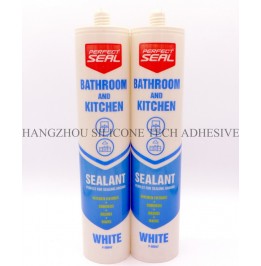Sealants are critical for creating durable, waterproof, or airtight barriers in construction and industrial projects. However, their effectiveness depends not only on proper application but also on avoiding chemical exposure during the curing phase. Understanding the timeline for chemical restrictions after sealant application helps prevent premature degradation, adhesion failure, or surface damage.

The first 24 to 72 hours after sealant application are the most vulnerable period. During this time, the material undergoes chemical reactions to achieve its final properties, making it highly sensitive to external contaminants.
Immediately after application, sealants are in a "green" state, where they have not yet fully cross-linked or hardened. Exposure to solvents, acids, or alkalis during this phase can disrupt the curing process, leading to soft or tacky surfaces. For example, even trace amounts of alcohol-based cleaners or paint thinners can dissolve uncured sealant layers, compromising adhesion to substrates.
While water-based sealants require moisture to cure, excessive humidity or direct water contact too soon can weaken the bond. In contrast, solvent-based sealants may emit volatile organic compounds (VOCs) during curing, and exposure to additional chemicals can alter their evaporation rate. Maintaining controlled environmental conditions—such as temperature and humidity levels recommended by the manufacturer—is essential to avoid interference.
As the sealant progresses through its curing cycle, its sensitivity to chemicals decreases but remains significant. During this period, certain substances can still cause surface discoloration, reduced flexibility, or adhesion issues.
Even mild household cleaners containing surfactants or low-pH solutions can affect partially cured sealants. These products may leave residues that inhibit full curing or create a barrier preventing proper adhesion. For instance, using a glass cleaner with ammonia on a freshly sealed window frame could lead to cloudy deposits or weakened joints.
Organic solvents like mineral spirits or oils commonly found in lubricants or cosmetics can penetrate semi-cured sealants, causing swelling or softening. In kitchens or bathrooms, where such substances are frequently used, avoiding contact with newly sealed surfaces for at least a week is crucial. Spills should be wiped immediately with a dry cloth to prevent absorption.
After the initial curing period, sealants gradually develop their intended chemical resistance. However, full resistance may take up to 28 days, depending on the formulation and environmental conditions.
Most sealants reach 80–90% of their final properties within 7 days but require additional time to achieve complete chemical resistance. During this extended curing phase, the polymer network continues to strengthen, reducing permeability to aggressive substances. For example, a silicone sealant used in a pool area may resist chlorine exposure after 14 days but achieves optimal performance only after a month.
Temperature and humidity play a significant role in determining how quickly a sealant reaches full chemical resistance. Cold temperatures slow down curing, extending the period during which the material is vulnerable. Conversely, high humidity can accelerate curing but may also introduce moisture-related issues if not properly managed. Adhering to the manufacturer’s guidelines for environmental conditions ensures optimal performance.
Before exposing sealed surfaces to chemicals, conducting small-scale tests can help verify compatibility and avoid widespread damage.
Applying a small amount of the intended cleaner or chemical to an inconspicuous area of the sealed surface allows observation of any adverse reactions. Signs of incompatibility include discoloration, bubbling, or softening. If no negative effects occur after 24 hours, the chemical is likely safe for broader use.
Even after full curing, periodic checks of adhesion and flexibility are advisable, especially in high-traffic or chemically exposed areas. Pressing gently on the sealant or flexing the joint can reveal hidden weaknesses. Loose or cracked sealants indicate potential chemical damage and require immediate attention to prevent water infiltration or further degradation.
By respecting the chemical exposure timelines after sealant application, contractors and homeowners can ensure long-lasting performance and avoid costly repairs. Proper curing practices, combined with cautious chemical use, maintain the integrity of sealed joints in diverse environments.
Copyright 2019 by Hangzhou Silicone Tech Adhesive Co., Ltd. All rights reserved.
Bathroom Sealant | Acrylic Sealant | Dow Corning 795 | Aquarium Sealant | Dow Corning 732 | Clear Silicone Sealant | Polysulfide Sealant | Glazing Sealant | Mirror Sealant | IG Sealant
Powered by Onepound